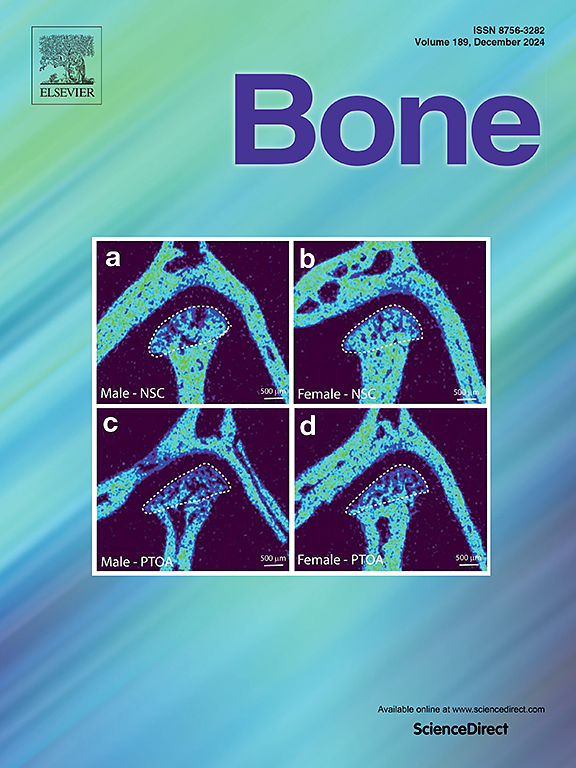The association between total volume and intensity of moderate-to-vigorous physical activity and incidence of osteoporosis
IF 3.5
2区 医学
Q2 ENDOCRINOLOGY & METABOLISM
引用次数: 0
Abstract
It is unclear whether moderate-to-vigorous physical activity (MVPA) and its proportion by vigorous physical activities (VPA) would decrease the risk of osteoporosis. This study aimed to examine a dose-response association between MVPA, VPA ratio, and incident osteoporosis in a large prospective cohort. We conducted a longitudinal analysis using data on MVPA, VPA, and osteoporosis from the UK Biobank prospective cohort study. A total of 368,553 eligible participants were included at baseline. Cox proportional hazard models were used to explore the association of MVPA and VPA with the incidence of osteoporosis for men and women, and trend tests were applied to assess the dose-response relationship between them. During a median follow-up of 12.56 years, 11,788 incident cases of osteoporosis (2016 in men and 9772 in women) were identified. The multivariate-adjusted HR (95%CI) of osteoporosis in the highest compared with lowest quartile of MVPA was 0.61 (0.54–0.69); P-trend < 0.001 for men and 0.84 (0.79–0.89); P-trend < 0.001 for women. In the analyses of proportions of VPA and the risk of osteoporosis, the highest tertile of VPA proportion was associated with the lowest risk of osteoporosis with a HR (95%CI) of 0.74 (0.63–0.86); P-trend < 0.001 for men and 0.80 (0.75–0.86); P-trend < 0.001 for women. A higher MVPA and VPA proportion were associated with decreasing osteoporosis risk in a dose-response manner, respectively, among British aged between 37 and 73 years.
中高强度体力活动的总量和强度与骨质疏松症发病率之间的关系。
目前还不清楚中度到高强度体力活动(MVPA)及其与高强度体力活动(VPA)的比例是否会降低骨质疏松症的风险。本研究的目的是在一个大型前瞻性队列中研究 MVPA、VPA 比例与骨质疏松症发病之间的剂量-反应关系。我们利用英国生物库前瞻性队列研究中有关 MVPA、VPA 和骨质疏松症的数据进行了纵向分析。共纳入了 368,553 名符合条件的基线参与者。研究采用 Cox 比例危险模型来探讨 MVPA 和 VPA 与男性和女性骨质疏松症发病率的关系,并采用趋势检验来评估它们之间的剂量-反应关系。在中位 12.56 年的随访期间,共发现 11788 例骨质疏松症病例(男性 2016 例,女性 9772 例)。与 MVPA 含量最低的四分位数相比,MVPA 含量最高的四分位数发生骨质疏松症的多变量调整后 HR(95%CI)为 0.61(0.54-0.69);P-趋势为:0.61(0.54-0.69)。
本文章由计算机程序翻译,如有差异,请以英文原文为准。
求助全文
约1分钟内获得全文
求助全文
来源期刊

Bone
医学-内分泌学与代谢
CiteScore
8.90
自引率
4.90%
发文量
264
审稿时长
30 days
期刊介绍:
BONE is an interdisciplinary forum for the rapid publication of original articles and reviews on basic, translational, and clinical aspects of bone and mineral metabolism. The Journal also encourages submissions related to interactions of bone with other organ systems, including cartilage, endocrine, muscle, fat, neural, vascular, gastrointestinal, hematopoietic, and immune systems. Particular attention is placed on the application of experimental studies to clinical practice.
 求助内容:
求助内容: 应助结果提醒方式:
应助结果提醒方式:


